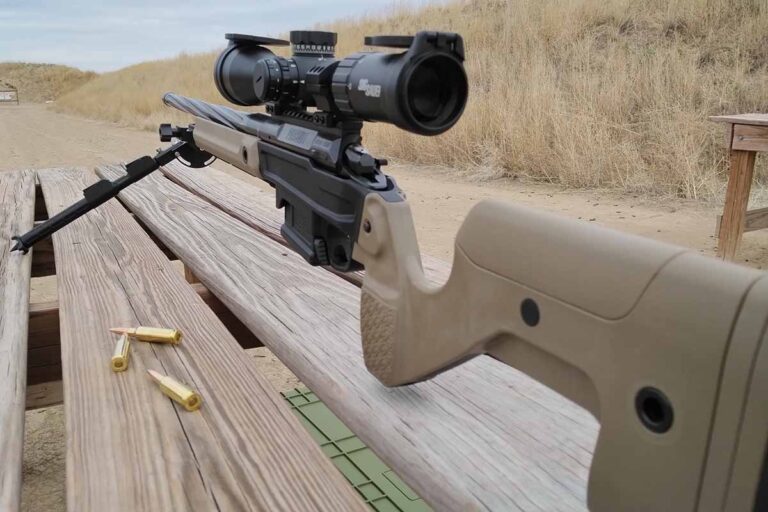
Decked out with premium components, the Pursuit ups the game for hunting rifles.
Stag Arms is known for its AR-style rifles. Lots of them—available in both right- and left-handed configurations. But times are changing at the Wyoming-based manufacturer.
Pushing into the hunting market, the company has set aside gas impingement and turned its attention to a more traditional system: bolt-actions. The result is the Pursuit Bolt Gun. It’s a marked break from the same-old, same-old at Stag and hunting rifle-making in general.
Decked out with premium parts, engineered to connect with vitals at a country mile, the rifle is situated at the vanguard of new precision hunters. And Stag brings it in at a price so nearly any hunter—with a little savings—can consider adding one to his gun safe.
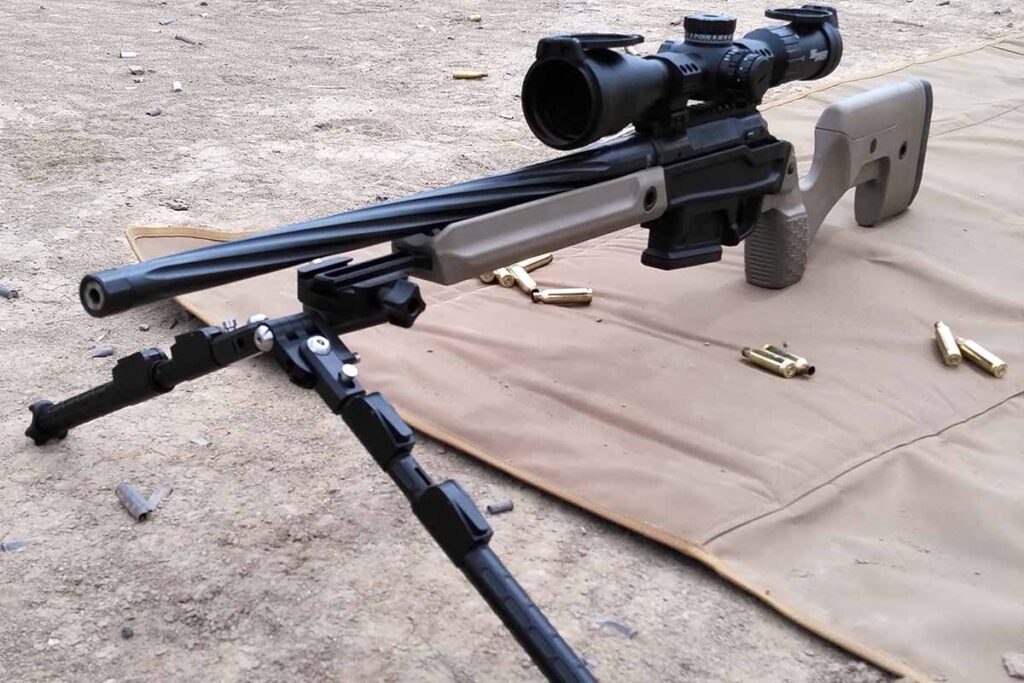
Having handled the prototype at the 2023 SHOT Show, I couldn't wait to get one to the range for live fire. Finally getting the opportunity a year later, I have to say that the Pursuit was well worth the wait.
Stag Pursuit Bolt Action Specs
- Made In America?: Yes
- Action Material: 416 Stainless Steel
- Action Footprint: Remington 700 SA
- Barrel Contour: Spiral Fluted Sporter
- Barrel Material: 416 Stainless Steel
- Finish: Blac Cerakote
- Scope Base: 20 MOA Biased 1913 Rail
- Caliber: 6.5 Creedmoor
- Barrel Length: 20 inches
- Twist Rate: 1:8
- Thread Pitch: 5/8×24 RH
- Trigger: Trigger Tech Primary – Adjustable 1.5lbs-4.0lbs, Single Stage
- Stock: Fully Adjustable Stag Arms Hybrid Hunter, Tan
- Magazine: AICS/AIAW
- Weight: 8 pounds, 12 ounces (striped and unloaded)
- MSRP: $1,899
Getting In On The Action
For anyone paying attention, there’s been a ton of buzz around another bolt-action as of late—the Aero Precision Solus. We did a hands-on review of the Solus, well worth the read. A sister company to Stag, there are a ton of similarities between the Aero rifle and Pursuit. Chief among these is the rifle’s actions.
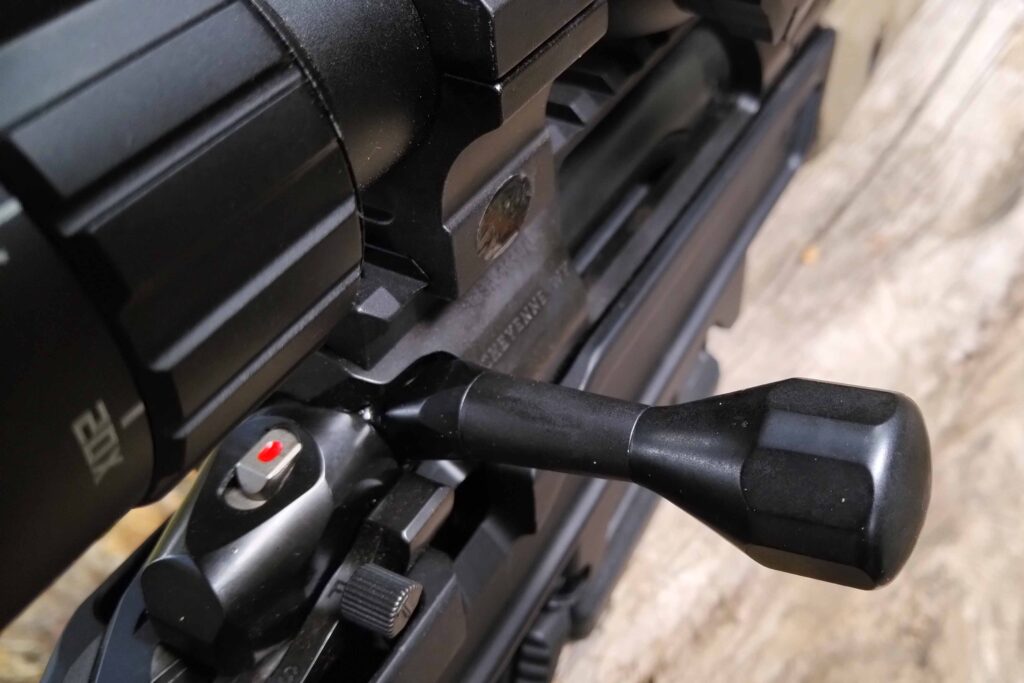
First off, and perhaps most importantly, the push-feed action has a Remington 700 footprint. Given this is the most common dimension in the bolt-action world, jumping chassis or stocks are a snap, as are trigger upgrades.
The bolt is a full-diameter three-lug design that has come into prominence in the past decade or so. Not only does this style of bolt keep production costs down, without compromising strength, it comes with some added benefits. Highlighting these is the bolt’s 60-degree throw, which makes it fast as well as allowing plenty of room for larger optics.
Interestingly, the bolt-head is interchangeable, though Stag does not offer any stand-alone components. It’s outfitted with dual ejectors that kicks the brass like nobody's business and all of it is made of stainless steel
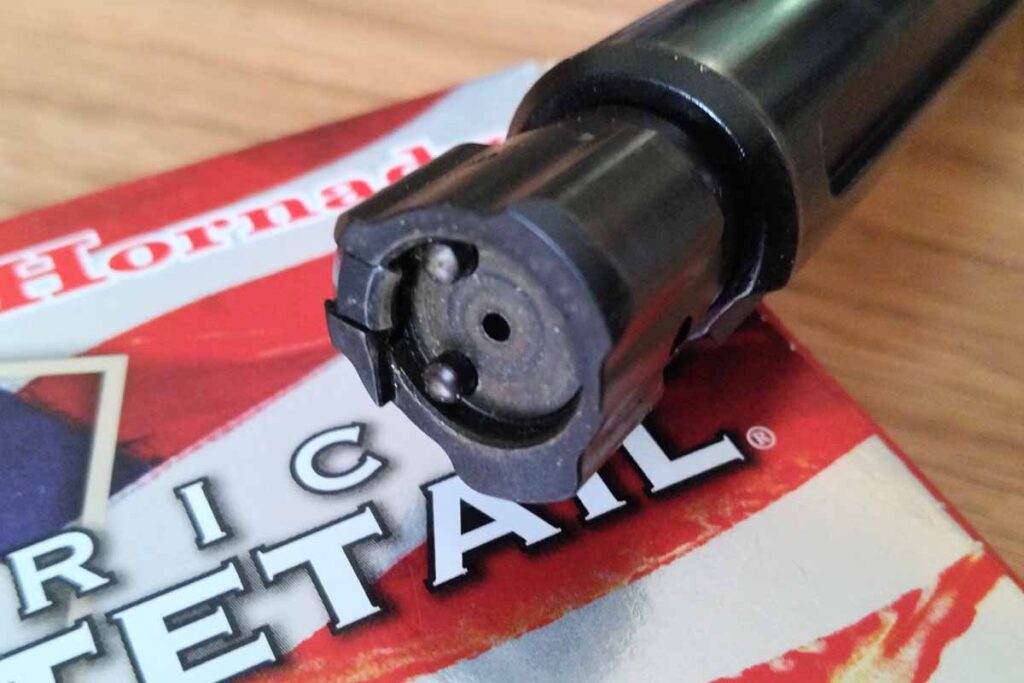
Perhaps, best of all, the action accepts Savage small shank barrels or shouldered Zermatt Origin pre-fit barrels. This, combined with the interchangeable bolt heads gives the Pursuit system a ton of flexibility, allowing barrel and caliber swaps without the need for a gunsmith.
Essentially, this adds up to a list of custom-action features found on an off-the-rack rifle action.
Barrel
Stag turned to another in-house partner to create the Pursuit’s barrel—Ballistic Advantage (it too is under the Aero banner). BA has more than earned its reputation for creating precision barrels and has come up with a solid system for the Stag rifle. The rifle I tested was a 6.5 Creedmoor and was outfitted with a 20-inch barrel; though, Stag optimized the length to the cartridge, with the .308 model coming with an 18-inch fire tube and the 6.5 PRC with a 22-inch barrel.
Across the board the BA barrels are machined from 416 stainless steel, Cerakote finished and spiral fluted. This final feature reduces some weight from the overall platform and creates more surface area, so the barrel disperses heat quickly. Finishing it all off, Stag threads the muzzle 5/8-24 so it's ready to accept an aftermarket brake or suppressor.
Stock
The Stag Pursuit uses a chassis system, but it has a unique twist. There is the chassis proper, but then it has two independent stock pieces—the fore and butt. At SHOT, the Stag representative told me the company would offer multiple stocking systems, but this has yet to manifest itself on the company’s website.
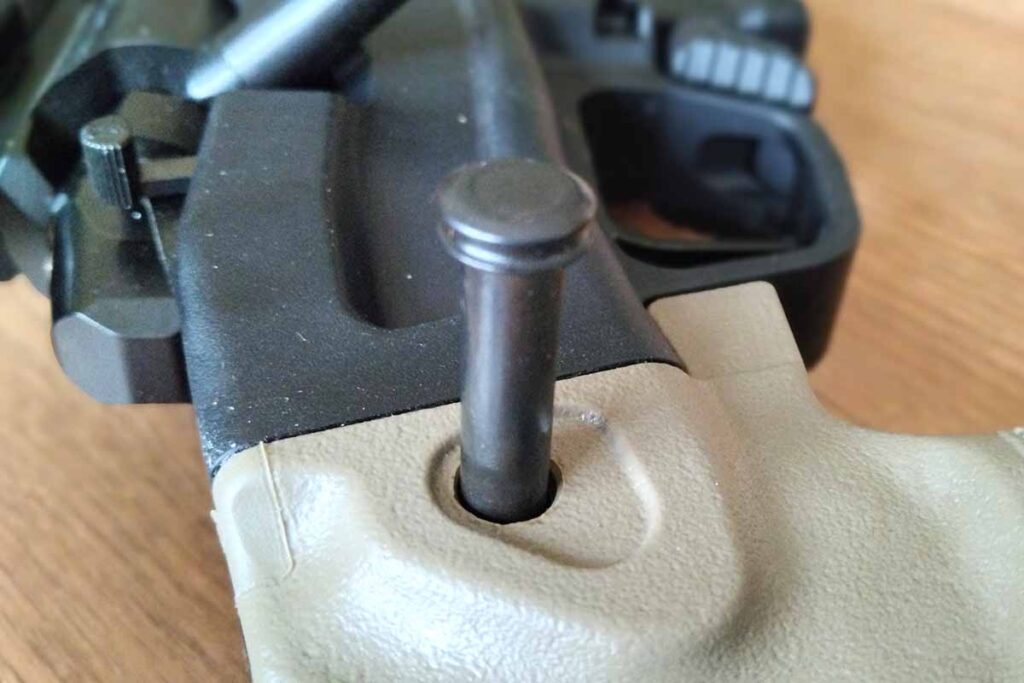
The fore of the gun has a flat ample base that keeps it rooted when shooting off a support. Even so, I found it manageable off-hand, though perhaps not so much as a traditional sporter hunting rifle (more on that in a bit).
The Pursuit Bolt Gun doesn’t lack in tripod and bipod mounting options up front. In addition to M-LOK sections, the fore also boasts a half ARCA rail and a Picatinny rail spigot that juts out the front. The spigot not only gives excellent leverage when using a bi/tripod, but it also keeps the accessory well out of the way of your hand if you need to use it on the fore.
The buttstock is fully adjustable for length-of-pull and cheek rise. The LOP system uses spacers, personally not my favorite way of going about things, but an understandable way of pinching pennies. The comb adjusts via a tension screw near the rear of the butt.
The butt is also nicely hollowed out and comes with a detachable bag hook, I like the idea of this for competition. However, I found that the lightweight stock material and svelteness of the butt tended to make the rifle front heavy.
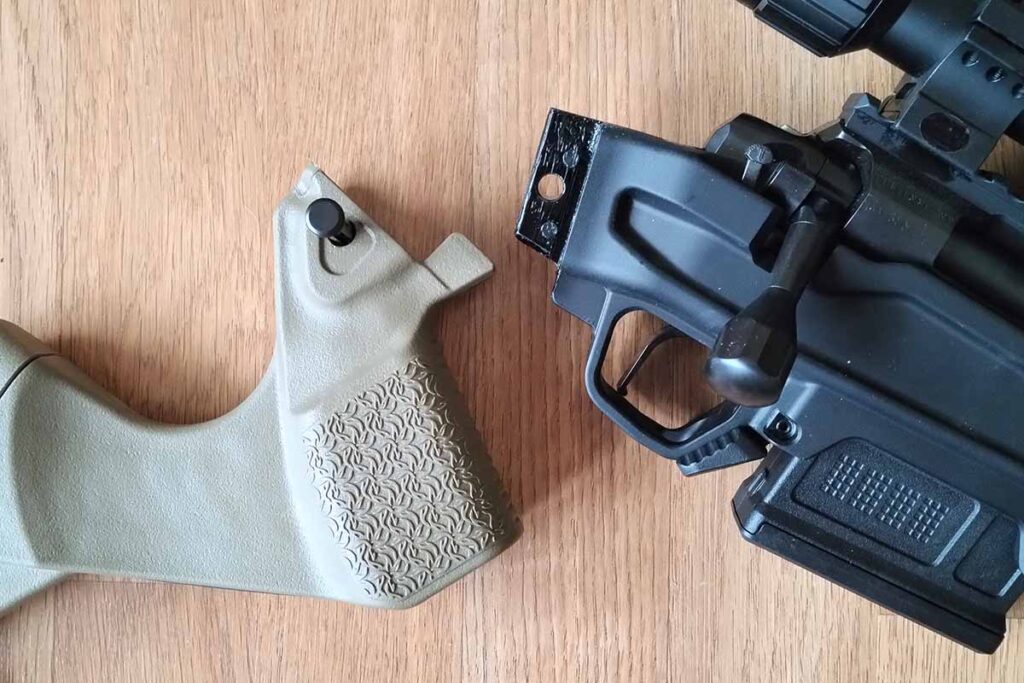
Interestingly, the butt attaches via an AR-style pin and comes off the chassis quickly and easily. This feature is especially nice when transporting the gun and space-savings are at a premium.
A final note on the stock, there are ample quick detach nodes on the fore and butt—six total, three on each section. Though I didn’t incorporate a sling to the test rifle I worked with I appreciated the additions, making the carry system very customizable.
Other Notables
The Pursuit Bolt Gun is aimed at accuracy and Stag put in a trigger to aid it in this mission. A single-stage TriggerTech Primary trigger is the order of the day, featuring a wonderfully comfortable flat-faced shoe. I didn’t have to mess with the switch out of the box, with the trigger breaking at right around 2.9 ounces consistently. Furthermore, Stag did its thinking when it designed the Pursuit for hunting, incorporating an oversized trigger guard, ample enough for a gloved finger.
The rifle feeds off AICS/AW-style magazines and Stag simplifies reloads considerably with a large ambidextrous release paddle at the front of the trigger guard. It also does the same on manipulating the bolt, including an oversized tactical-style handle.
Stag Pursuit At The Range
I put 240 rounds down range with the Stag Pursuit Bolt Gun and walked away thoroughly impressed. First off, AmmoToGo.com provided the ammunition for this review, so a big thank you to them.
I left the rifle fairly stock out of the box, only topping it with a SIG Whiskey4 5-20x50mm scope and slapping an MDT CKYE-POD Lightweight bipod to the Picatinny spigot. I’ll admit the support was a bit of overkill for the hunting rifle, yet still a workable choice—particularly for anyone who might consider the rifle for NRL Hunter-style competitions.
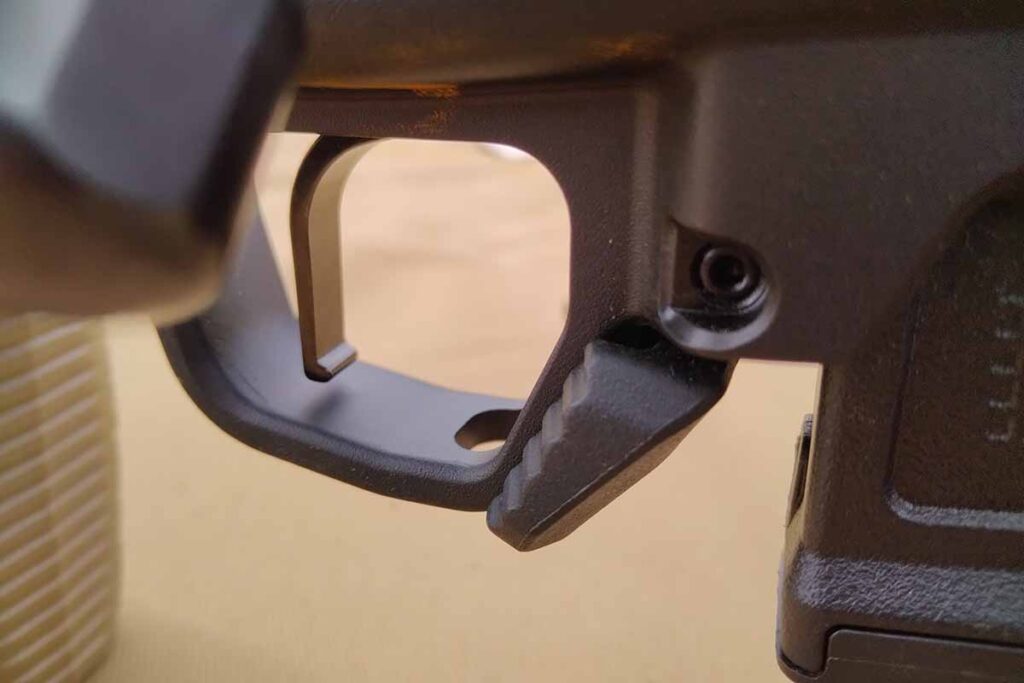
The Whiskey4 was a perfect match for the Pursuit, a hunting optic but one with refined upgrades for long-range engagements with game. Not to mention, its ample magnification and crystal-clear glass ensured the rifle could perform up to its billing.
And the Pursuit more than did. Through three different loads—Winchester 125-grain HP Target & Practice, Hornady 129-grain SP American Whitetail and Sellier & Bellot 140-grain FMJ BT—shooting four groups of five with each ammo type at 100 yards — the bolt gun acquitted itself well. One might even say phenomenally.
First off, shooting groups of five offers more validity to a rifle's true performance. Three-shot groups aren’t statistically significant and nearly any modern rifle can achieve MOA results at this standard.
With the rifle averaging .937-inch groups across the three brands, it’s safe to say the Pursuit knocked it out of the park. Especially heartening, it played well with the Hornady hunting ammunition, which produced the best single group of the day—.331 inches. However, it performed best overall shooting Winchester, with an impressive .744 inch four-group average.
| Load | Muzzle Velocity (FPS) | Muzzle Energy (FT-LBS) | Group Size (Inches) |
| Winchester 125-grain HP Target & Practice | 2,850 | 2,254 | .744 |
| Hornady 129-grain SP American Whitetail | 2,820 | 2,277 | .927 |
| Sellier & Bellot 140-grain FMJ BT | 2,658 | 2,202 | 1.139 |
| Average | .937 |
Impressions
The rifle was extremely pleasant to shoot supported from the prone position and the CKYE-POD more than did its job. The bolt was silky smooth cycling without an iota of rattle when moving down the raceway. Furthermore, I genuinely believe the TriggerTech trigger enhances the rifle’s overall performance.
First off, I found it very consistent in its break allowing for an exceptionally smooth squeeze. Additionally, its flat shoe makes repeated finger placement easily achieved, making it an amazingly comfortable switch to run.

The rifle’s hefty, more than 9 pounds loaded and with a scope. But this weight ate up recoil and allowed me to track my shots to the target. However, the Pursuit’s weight is a double-edged sword.
While it’s manageable to shoot offhand, I’m not going to say it’s the most pleasant due to its load. If I were to take this in the field, I believe I would invest in a solid tripod to shoot off—at least a very stout shooting stick.
The Pursuit’s weight also concerned me about plain old carry burden. I hunt a lot of mule deer and generally average close to 10 miles of hiking throughout a hunt to get a shot. My shoulder throbbed with the thought of humping this gun that distance.
Yet, when you’re shooting sub-MOA groups consistently with a hunting rifle, you have a lot of incentive to man up and tote the gun.
Parting Shot
I like the Pursuit Bolt Gun… a lot. It’s comfortable, consistent and above all accurate. You can’t ask for much more. Hunting rifles have improved by leaps and bounds in the past 20 years, yet Stag proves there is still room to grow in this market.
I perhaps don’t recommend the gun as a starter for first-time hunters—you’re better off spending less and investing in learning woodcraft. But for those who hunt wide-open spaces and want reassurance a long-range attempt will come in on a once-in-a-lifetime buck or are looking for a solid competition rifle, well one thing is certain… the Pursuit is on!
Pros
- Very Accurate
- Excellent Trigger
- Smooth Action
- Very Flexible Platform
Cons
- Heavy
Pursuit Bolt Action Deals
More Hunting Rifle Reviews:
- Back In Black: Marlin 1895 Dark Series Review
- Montana Rifle Company Junction Review
- Rossi R95 Review: Hands-On With The Trusty Trapper
- Bergara BMR Review: .22LR Tested


![Best Concealed Carry Guns In 2025 [Field Tested] Wilson Combat EDC X9S 1](https://gundigest.com/wp-content/uploads/Wilson-Combat-EDC-X9S-1-324x160.jpg)


![Best 9mm Carbine: Affordable PCCs [Tested] Ruger Carbine Shooting](https://gundigest.com/wp-content/uploads/Ruger-Carbine-Shooting-100x70.jpg)
![Best AR-15: Top Options Available Today [Field Tested] Harrington and Richardson PSA XM177E2 feature](https://gundigest.com/wp-content/uploads/Harrington-and-Richardson-PSA-XM177E2-feature-100x70.jpg)
